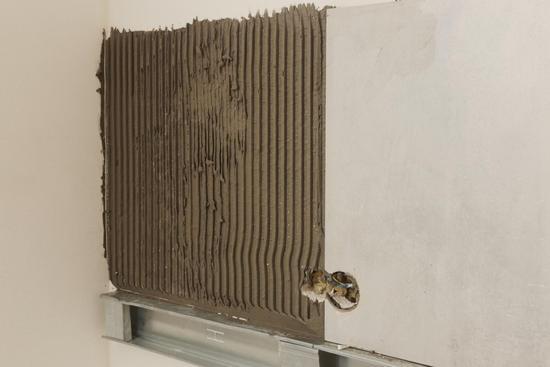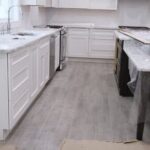Are you considering making improvements to your home but worried about how to finance them? One option worth exploring is borrowing more on your mortgage. This article delves into the possibility of increasing your mortgage amount in order to fund your home improvement plans.
Home improvements can be a significant investment, but they can also enhance the value and appeal of your property. Whether you’re looking to renovate your kitchen, add an extension, or remodel your bathroom, having access to additional funds can make these projects more attainable.
By borrowing more on your mortgage for home improvements, you can unlock a range of benefits. Not only does this option provide you with immediate access to the funds you need, but it also allows you to spread out the repayments over a longer period of time. This can alleviate some of the financial burden that comes with large-scale home improvement projects.
In this article, we will explore the different mortgage options available for funding home improvements. We will also dive into the requirements necessary to qualify for additional borrowing and discuss how appraisals play a key role in determining the amount you can borrow. Additionally, we will provide a step-by-step guide on applying for and securing additional mortgage funds and offer strategies to maximize the value of your borrowing amount.
If you’re unsure whether borrowing more on your mortgage is the right choice for financing your home improvements or if you want to better understand how this option works, continue reading as we uncover all there is to know about this financial avenue.
Understanding the Benefits
Borrowing more on your mortgage for home improvements can offer a range of benefits that can significantly boost your home improvement plans. Whether you’re looking to renovate your kitchen, add an extension, or make energy-efficient upgrades, accessing additional funds through your mortgage can provide the financial flexibility you need. Here are some key benefits to consider:
- Lower Interest Rates: One of the main advantages of borrowing more on your mortgage for home improvements is that you can typically secure a lower interest rate compared to other types of loans. Mortgage interest rates are generally lower than personal loan rates or credit card rates, which means that by borrowing more on your mortgage, you may be able to save a significant amount of money in interest over the long term.
- Extended Repayment Period: By incorporating the additional funds into your existing mortgage loan, you can potentially extend the repayment period. This allows you to spread out the cost of your home improvements over a longer period and reduce your monthly repayments. It’s important to note, however, that extending the term of your mortgage could result in paying more interest overall.
- Increase in Home Value: Another benefit of borrowing more on your mortgage for home improvements is the potential increase in your home’s value. Making substantial upgrades or renovations to your property can enhance its appeal and market value.
This means that not only are you improving your living space but also potentially building equity in your home. This increased equity may provide you with future opportunities such as accessing further financing options or potentially selling at a higher price if you decide to move in the future.
To fully understand and maximize the benefits of borrowing more on your mortgage for home improvements, it’s important to carefully consider different factors such as the requirements, appraisal process, and financial impact involved. Prioritize understanding these aspects before moving forward with securing additional financing through your mortgage for home improvements.
Exploring the Different Mortgage Options
Types of Mortgages for Home Improvements
When it comes to borrowing more on your mortgage for home improvements, you have various options to consider. Each type of mortgage has its own advantages and considerations, so it’s important to understand the different possibilities before making a decision.
Home Equity Loan
A home equity loan is a common option for financing home improvements. With this type of loan, you borrow against the equity you have built up in your home. The lender provides you with a lump sum that you can use for renovations or repairs. The interest rates for home equity loans are typically fixed, which means they won’t change over the life of the loan. This can be beneficial if you prefer predictable monthly payments.
Home Equity Line of Credit (HELOC)
A HELOC is another way to tap into your home’s equity for funding your home improvements. Unlike a home equity loan, a HELOC works more like a credit card. You have access to a certain amount of funds that you can borrow from as needed during a specified withdrawal period, usually 10 years.
During this time, you can borrow and repay funds multiple times. The interest rates on a HELOC are usually variable, meaning they can fluctuate based on market conditions.
Cash-Out Refinance
Another option to consider is a cash-out refinance. With this approach, you replace your existing mortgage with a new one that has a higher loan amount than what you currently owe on your home.
The difference between the two amounts is then given to you in cash, which can be used towards your home improvement projects. Cash-out refinancing often results in a new mortgage with a lower interest rate than other borrowing methods such as personal loans or credit cards.
Factors to Consider When Choosing a Mortgage Option
When deciding on the best mortgage option for financing your home improvements, several factors should be taken into account. These include:
Interest Rates and Repayment Terms
Comparing interest rates and repayment terms for each type of mortgage is crucial to determine the long-term costs and affordability. Consider whether you prefer a fixed or variable rate, as well as the length of the repayment period.
Loan Amount and Home Equity
Evaluate how much funding you need for your specific home improvement project. Depending on your current mortgage balance and the amount of equity you have built up in your home, certain options may provide more flexibility than others.
Fees and Closing Costs
Closely examine any fees associated with borrowing more on your mortgage, including origination fees, appraisal fees, closing costs, and other charges. These additional expenses can vary depending on the lender and loan type.
Impact on Monthly Payments
Consider how taking on additional debt will affect your monthly budget. Calculate the expected increase in your monthly mortgage payment to ensure it aligns with your financial capabilities.
By carefully assessing these factors and understanding the pros and cons of each mortgage option available for financing home improvements, you can make an informed decision that suits your needs and goals.
The Requirements
Income and Employment Stability
One of the key requirements for qualifying to borrow more on your mortgage for home improvements is having a stable income and employment history. Lenders typically want to see that you have a consistent source of income that allows you to meet your monthly mortgage payments along with any additional borrowing amount. This can be demonstrated through pay stubs, tax returns, and employment verification documents.
Good Credit Score
Another important requirement is having a good credit score. Your credit score plays a significant role in determining whether you are eligible for additional borrowing on your mortgage and the interest rate you will receive. Lenders prefer borrowers with higher credit scores as it signifies their ability to manage debt responsibly. Before applying for additional borrowing, it’s important to review your credit report for any errors or discrepancies and take steps to improve your score if needed.
Sufficient Equity in Your Home
In order to qualify for borrowing more on your mortgage, you need to have sufficient equity in your home. Equity refers to the difference between the current market value of your home and the outstanding balance on your mortgage. Lenders typically require borrowers to have a certain percentage of equity, such as 20%, before they can consider approving additional borrowing. This ensures that there is enough value in the property to secure the loan.
Debt-to-Income Ratio
Lenders also assess a borrower’s debt-to-income ratio when determining eligibility for additional borrowing on their mortgage. This ratio compares your monthly debt payments (including the new mortgage payment) to your gross monthly income. A lower debt-to-income ratio indicates that you have more disposable income available to cover loan repayments, making you a less risky borrower.
Documentation Requirements
When applying for additional borrowing on your mortgage, be prepared to provide documentation such as bank statements, tax returns, proof of income, and identification. Lenders will use these documents to assess your financial situation and determine your eligibility for the loan. It’s important to have all the necessary documentation ready before starting the application process to expedite the approval process.
By meeting these requirements, you can increase your chances of qualifying for additional borrowing on your mortgage for home improvements. However, it’s always a good idea to consult with a mortgage advisor or lender directly to get personalized advice and guidance based on your specific financial situation.
Evaluating Your Home’s Value
When considering borrowing more on your mortgage for home improvements, it is crucial to understand how appraisals play a key role in determining the additional borrowing amount. An appraisal is an unbiased assessment conducted by a professional appraiser to determine the market value of your home. The lender will rely on this appraisal to determine how much additional borrowing you qualify for.
Appraisals are important because they provide an objective and independent evaluation of your property’s worth. The appraiser will carefully consider various factors such as the size and condition of the property, its location, comparable sales in the area, and any recent improvements or renovations you have made.
The market value determined by the appraisal serves as a guide for the lenders when deciding how much they are willing to lend you for home improvements. Lenders typically have a maximum loan-to-value (LTV) ratio that determines the percentage of your property’s value that they are willing to finance.
For example, if your home is appraised at $300,000 and the lender allows up to 80% LTV, then you may be eligible to borrow up to $240,000 ($300,000 x 0.80).
It is crucial for homeowners considering borrowing more on their mortgage for home improvements to ensure that their homes are adequately appraised. This means taking steps to enhance your property’s value before scheduling an appraisal appointment with a licensed appraiser.
Simple actions such as decluttering and cleaning can help present your home in its best light during the appraisal process. It is also beneficial to research recent sales in your neighborhood and compile a list of any notable improvements or upgrades you have made.
The Process
Borrowing more on your mortgage for home improvements can be a great way to finance your renovation plans. However, the process of applying for and securing an additional mortgage can be complex. This section will provide you with a step-by-step guide on how to navigate this process smoothly.
Step 1: Assess your financial situation
Before applying for an additional mortgage, it is important to assess your current financial situation. Review your income, expenses, credit score, and any other debts you may have. This will help you determine if borrowing more on your mortgage is a feasible option for you.
Step 2: Research mortgage lenders
Once you have assessed your financial situation and decided to move forward with borrowing more on your mortgage, it’s time to research different lenders. Shop around for the best interest rates and loan terms that suit your needs. Consider both traditional banks and online lenders when conducting your research.
Step 3: Gather necessary documents
When applying for an additional mortgage, you will need to provide certain documents to the lender. These may include income documentation (such as pay stubs or tax returns), bank statements, proof of homeownership, and information about the home improvement project (such as cost estimates or contractor contracts). Gather all these documents in advance to streamline the application process.
Step 4: Submit your application
Once you have chosen a lender and gathered all the necessary documents, it’s time to submit your application. Fill out the required forms accurately and provide all requested information. Make sure to double-check everything before submitting the application to avoid delays or potential issues down the line.
Step 5: Wait for approval and appraisal
After submitting your application, you will need to wait for the lender’s approval decision. The lender will also likely schedule an appraisal of your property to determine its current value. This appraisal plays a key role in determining the amount of additional borrowing you may qualify for.
Step 6: Closing the loan
If your application is approved, you will move forward with closing the loan. This involves signing all necessary paperwork and legal documents. Be sure to carefully review each document before signing and ask any questions you may have.
By following this step-by-step guide, you can navigate the process of applying for and securing an additional mortgage for home improvements with confidence. Remember to thoroughly assess your financial situation and research different lenders to find the best terms for your needs.
Assessing the Financial Impact
When considering whether to borrow more on your mortgage for home improvements, it is important to carefully assess the financial impact. While there are potential benefits to borrowing more on your mortgage, there are also some drawbacks that you should take into consideration.
One of the main benefits of borrowing more on your mortgage for home improvements is that it allows you to access a larger amount of funds than you may be able to obtain through other financing options. This can give you the financial flexibility needed to tackle larger-scale projects or make significant upgrades to your home.
Additionally, by spreading out the payments over the life of your mortgage, you may be able to secure a lower interest rate compared to taking out a separate loan for your home improvements.
However, it is important to consider the potential drawbacks of borrowing more on your mortgage as well. One major concern is that increasing your mortgage debt will result in higher monthly payments and potentially a longer repayment term.
It is crucial that you weigh the additional cost against the value that the home improvements will bring. Another factor to consider is that by using your home as collateral, you are putting it at risk if you are unable to meet your loan obligations in the future.
To help assess the financial impact, here are some pros and cons of borrowing more on your mortgage for home improvements:
Pros:
- Access to larger funds for substantial renovations or upgrades.
- Lower interest rates compared to separate loans.
- Spread out payments over time.
Cons:
- Higher monthly payments and potentially longer repayment term.
- The risk of putting your home at stake if unable to meet loan obligations.
Ultimately, it is crucial to carefully evaluate these pros and cons before making a decision about borrowing more on your mortgage for home improvements. By weighing both sides and considering your individual financial situation and goals, you can make an informed choice that aligns with your needs and priorities.
Top Tips for Maximizing the Value
When it comes to borrowing more on your mortgage for home improvements, it’s important to have a strategy in place to make the most of your additional borrowing amount. Here are some top tips to help you maximize the value:
- Plan and prioritize: Before you start making any improvements, take the time to plan and prioritize your projects. Make a list of what needs to be done and determine which projects will add the most value to your home. This way, you can allocate your additional borrowing amount towards the projects that will have the biggest impact.
- Shop around for quotes: Don’t settle for the first contractor or supplier you come across. Take the time to shop around and get multiple quotes for your home improvement projects. This will not only help you find the best price, but it will also give you an idea of how much each project is likely to cost, allowing you to budget accordingly.
- Do some of the work yourself: Depending on your skillset and comfort level with DIY projects, consider doing some of the work yourself. By taking on certain tasks, such as painting or landscaping, you can save money on labor costs and stretch your additional borrowing amount even further.
- Invest in energy-efficient upgrades: When choosing where to allocate your additional borrowing amount, consider investing in energy-efficient upgrades. These types of improvements not only make your home more comfortable and sustainable but can also provide long-term savings on utility bills. Upgrades such as installing solar panels or upgrading insulation may require a larger upfront investment but can pay off in the long run.
| Tips | Description |
|---|---|
| Plan and prioritize | Make a list of what needs to be done and determine which projects will add the most value. |
| Shop around for quotes | Get multiple quotes for your home improvement projects to find the best price. |
| Do some of the work yourself | Consider doing certain tasks yourself to save money on labor costs. |
| Invest in energy-efficient upgrades | Allocate funds towards upgrades that will make your home more sustainable and save on utility bills. |
By following these top tips, you can make the most of your additional borrowing amount for home improvements and ensure that you are getting the greatest return on your investment. Remember to carefully consider each project’s potential contribution to both the value and functionality of your home, as well as any long-term savings they may offer. With a strategic approach, you can transform your home into a more comfortable and desirable living space while maximizing its overall value.
Case Studies
One of the best ways to understand the potential benefits and considerations of borrowing more on a mortgage for home improvements is by examining real-life examples. These case studies provide valuable insights into how homeowners have successfully utilized this option to enhance their living spaces and increase the value of their properties.
In one case study, Jane Smith, a homeowner in suburban Chicago, wanted to renovate her outdated kitchen and bathroom. She had been saving up for these improvements but found that her budget was not sufficient to cover the costs.
After consulting with her mortgage lender, Jane discovered that she could borrow an additional amount on her mortgage based on the increased value that the renovations would bring to her home. By doing so, she was able to complete both projects without depleting her savings or taking out another loan at higher interest rates.
Another example comes from Mark Johnson, a homeowner in Los Angeles who aspired to add a backyard swimming pool to his property. He had always dreamed of having a pool for his family’s enjoyment but didn’t have enough cash on hand to fund such a significant project.
Through research and discussions with his lender, Mark learned that he could borrow against the equity in his home and use it specifically for home improvements. With this knowledge, he successfully secured additional funds on top of his existing mortgage and turned his dream into reality.
These case studies highlight how borrowing more on a mortgage for home improvements can be an effective solution for homeowners looking to enhance their living spaces. By utilizing the equity in their homes, these individuals were able to finance their projects while also taking advantage of potentially lower interest rates compared to other types of loans.
Of course, every situation is unique, and it’s essential to carefully consider your own financial circumstances before making any borrowing decisions. However, these real-life examples serve as inspiring success stories that demonstrate how this option can be a viable and beneficial choice for homeowners seeking to invest in their properties.
Conclusion
In conclusion, borrowing more on a mortgage for home improvements can be a beneficial option for homeowners looking to enhance the value and functionality of their property. By leveraging the equity in their home, borrowers can access additional funds to finance renovations, repairs, or other improvements. This article has outlined the benefits and considerations associated with this type of borrowing, as well as provided guidance on how to navigate the process.
One of the key advantages of borrowing more on a mortgage for home improvements is the potential to increase the value of your property. Investing in upgrades such as kitchen remodels, bathroom renovations, or energy-efficient enhancements can result in higher appraised values and potentially lead to a greater return on investment when it comes time to sell.
Additionally, by financing these improvements through a mortgage loan with competitive interest rates, homeowners may save money compared to taking out personal loans or using credit cards.
However, it is important to carefully weigh the benefits against the considerations before deciding to borrow more on a mortgage for home improvements. Homeowners should consider factors such as their ability to afford increased monthly payments and any associated fees or closing costs. It is essential to thoroughly evaluate the financial impact and ensure that borrowing more aligns with your long-term goals.
Ultimately, consulting with a trusted mortgage professional can help you determine whether borrowing more on a mortgage for home improvements is right for you. By understanding the requirements, exploring different mortgage options, assessing your home’s value, and considering the potential pros and cons, you will be equipped with valuable knowledge to make an informed decision about financing your home improvement projects.
Frequently Asked Questions
Can I increase my mortgage for home improvements?
Yes, it is possible to increase your mortgage for home improvements. This can be done through a process known as a “cash-out refinance.” Essentially, you would refinance your current mortgage for a higher amount than what you currently owe on your home.
The additional funds you receive can then be used for home improvement projects. However, it’s important to note that this will increase the overall amount of debt you have on your property and may result in higher monthly mortgage payments. Additionally, the lender will typically require an appraisal of your property to determine its value before approving the increase.
Can you ask for a higher mortgage for renovations?
When it comes to asking for a higher mortgage specifically for renovations, there are various options available. One option is to consider a renovation loan such as a HomeStyle Renovation or FHA 203(k) loan. These loans allow borrowers to finance both the purchase of a home and the cost of renovations into one mortgage.
Another possibility is getting a second mortgage or line of credit specifically for renovations, which would be in addition to your existing mortgage. Ultimately, whether or not you can get a higher mortgage for renovations will depend on factors such as your creditworthiness, income, and the equity you have in your home.
Can you add repair costs to your mortgage?
Yes, it may be possible to add repair costs to your mortgage under certain circumstances. This can often be achieved through government-backed programs like the Federal Housing Administration’s (FHA) 203(k) loan. These loans allow borrowers to finance both the purchase or refinancing of a home and the cost of repairs or improvements into one loan.
With this program, repair costs can be added into the loan amount based on an appraisal that takes into account both the current value of the property and its post-renovation value. It’s worth noting that there may be limitations on what types of repairs and improvements are eligible under these programs and specific guidelines that must be followed throughout the process.

I’m thrilled to have you here as a part of the Remodeling Top community. This is where my journey as an architect and remodeling enthusiast intersects with your passion for transforming houses into dream homes.





